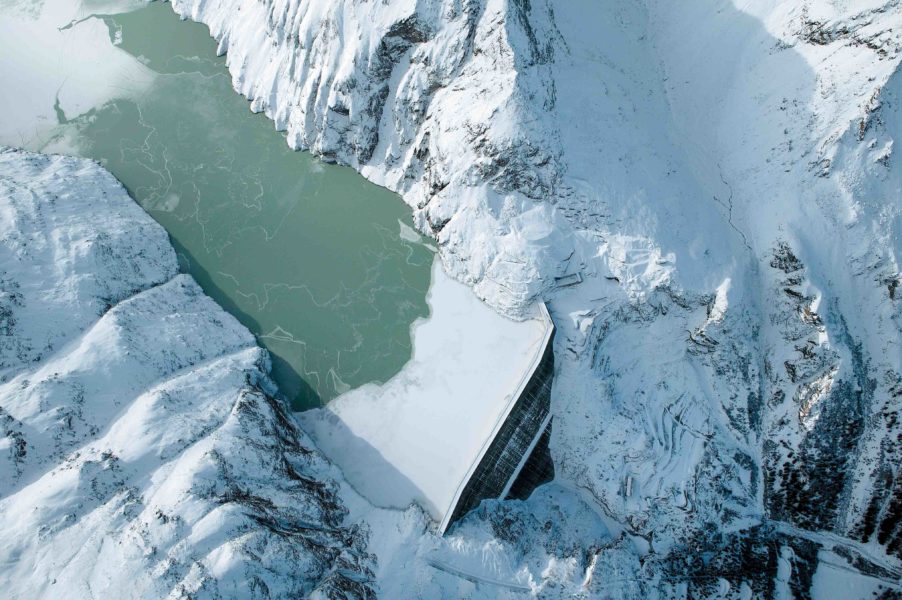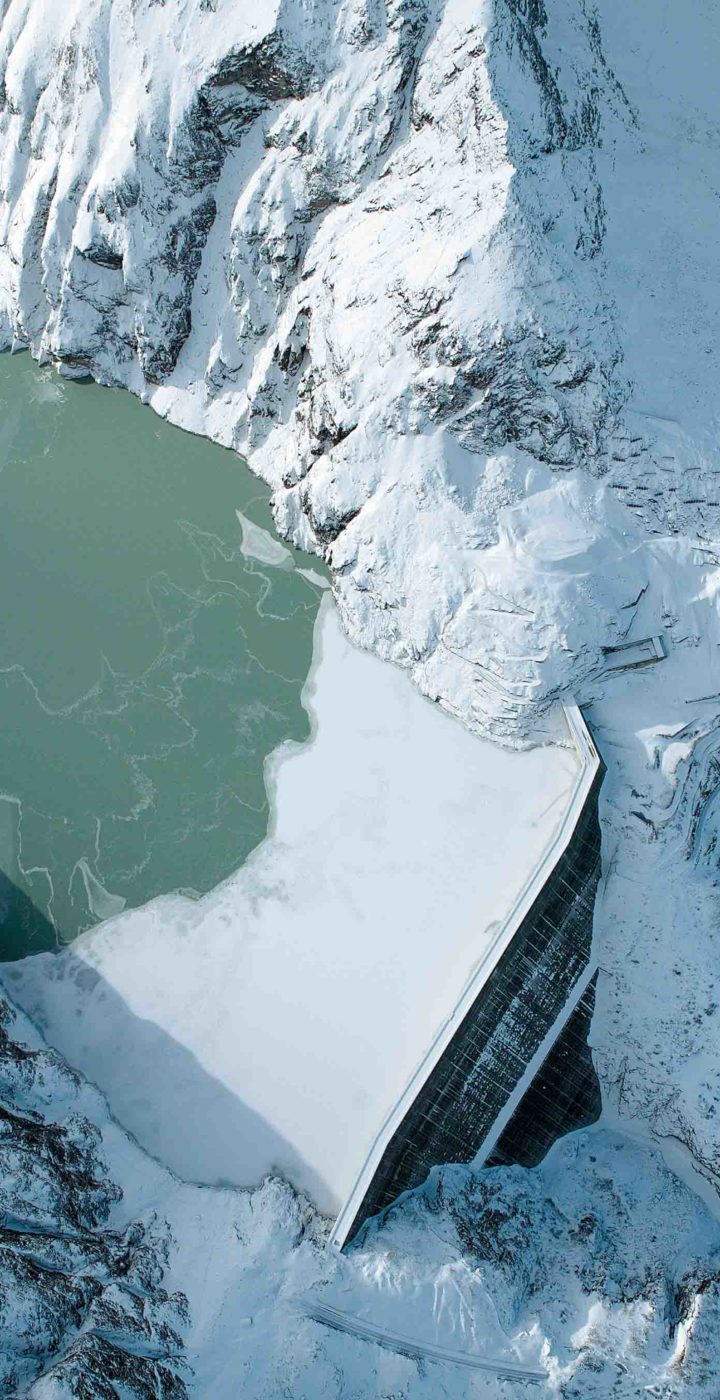Will the Gornerli project be realised under the existing concession or is a new concession necessary?
Neither. The Gornerli project is being realised under an addition to the existing Grande Dixence concession. The concession procedure concerns only the Gornerli part; the existing concessions of the Grande Dixence are not affected.
Why is the canton not participating in the project?
The current concession and its addition run until the end of the existing Grande Dixence concession at the end of 2044. After that, the concession needs to be renewed or a new one granted. In this context, cantonal participation is envisaged in accordance with current legislation.
What role does the commune of Zermatt play in this project?
The commune of Zermatt is the concession grantor of the affected hydropower plants in the commune of Zermatt and co-initiator of the Gornerli project. The commune of Zermatt is directly represented on the project steering committee and is informed about all project steps. Future collaboration and all relevant issues will be governed jointly by the commune of Zermatt and Grande Dixence SA.
Does the Gornerli project require subsidies and if so, how much?
Current legislation provides for subsidies for new hydraulic power stations. This is intended to lay the foundation for the Swiss Federal Government’s Energy Strategy 2050, which aims to replace fossil fuels with renewable energy. The amount of funding for individual projects depends on the construction costs and the electricity price forecasts. Although the Gornerli project is economically interesting, it also relies on subsidies depending on the market price forecast and the final construction costs.
How does the new Electricity Act (omnibus bill) affect the project?
Gornerli is the largest project of the Hydropower Round Table. The new Electricity Act simplifies the spatial planning process at the communal level without restricting the applicable concession and building permit procedures. The adoption of the Electricity Act set the Gornerli project to the level of “national interest”, which means it takes precedence over protection interests. All democratic rights in connection with the appeals procedure remain unaffected in accordance with applicable legislation. As part of the agreement reached at the Hydropower Round Table, it was also agreed that the projects should propose and implement appropriate compensation measures.
What assurances are there that the new dam will be built and operated safely enough?
Every dam in Switzerland is subject to the Federal Dams Ordinance. The Swiss Federal Office of Energy (SFOE) is responsible for compliance with this ordinance. The SFOE monitors the project and ensures that all applicable laws, ordinances and guidelines are complied with. The operators must take the necessary precautions (safety devices, measuring installations, tests, etc.).
What are the biggest project risks right now?
The project has been shown to be feasible in principle. In addition to the usual standard risks associated with such large structures, the project sponsors currently rate the procedural risks (concession addition and planning approval as well as objections and complaints), the risks associated with the scheduling and approval of the compensation measures, the geological and hydrological risks, the risks associated with a desired agreement with the stakeholders and the risks associated with challenging logistics as the highest.
Is it even permissible to build such a project in an ILNM area?
The Gornerli project is a project of national importance and is located in ILNM area no. 1707 Dent Blanche-Matterhorn-Monte-Rosa. In accordance with the Energy Act (EnA) and the Nature and Cultural Heritage Act (NCHA), the construction of the Gornerli project is not prohibited in principle, but the greatest possible protection must be sought and the structural impacts must be compensated for by substitute and compensation measures.
How will the interests of protection and utilisation be weighed up?
The greatest possible attention is paid to the protection interest in the environmental impact assessment and in cooperation with the stakeholders. The aim is to work with the stakeholders to develop a project that is universally accepted. If there are still any objections, it is possible to reach an agreement out of court. Otherwise, the courts will have to decide on the approval within the framework of the legislation in force.
To what extent will the Gornerli project have a positive impact on regional and supraregional flood safety?
The Gornerli retention volume would have prevented the two Matter Vispa floods in Zermatt at the end of June 2024 (except for damage from the Triftbach tributary) and greatly reduced the flood damage in Val d’Hérens and throughout the entire Matter Valley. Similar or even stronger floods are to be expected in the future. The Gornerli project will also limit severe flooding and therefore minimise the risk of damage. The Gornerli project also greatly mitigates local risks such as glacial lake outburst floods, debris flows or large-scale slope movements and the resulting flooding.
How will the future reservoir management take place in terms of power production, flood protection and water supply?
Flood protection and water supply will be prioritised in the context of future reservoir management in the form of volume and water retention. The future management will be bindingly regulated between Grande Dixence SA and the commune of Zermatt.


